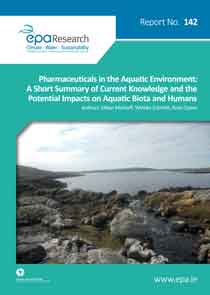Summary: This report aims to collate the knowledge base by documenting what is currently known and understood about pharmaceuticals in the aquatic environment and their potential impacts on aquatic biota and ultimately humans.

Reports concerning the quantitative analysis of pharmaceuticals in marine ecosystems are somewhat limited. With an increasing human population in coastal regions, elevated levels of anthropogenic pollution can be anticipated. The detection of novel contaminants, such as human pharmaceuticals in marine and coastal waters, is a new challenge. The knowledge of the potential toxicological effects of these novel contaminants in non-target organisms remains incomplete. It is necessary to determine pharmaceutical fate and assess any potential risk of exposure for aquatic species and, ultimately, for seafood consumers.
However, in Ireland, very little research has been carried out to determine the presence of pharmaceutical residues in the aquatic environment. This report aims to collate the knowledge base by documenting what is currently known and understood about pharmaceuticals in the aquatic environment and their potential impacts on aquatic biota and ultimately humans. This summary document provides the background for a larger and more detailed report entitled ‘The assessment and potential human impact of exposure to environmental contaminants on marine and freshwater bivalves’ derived from a five-year, EPA-funded Developing Environmental Research Potential (DERP) study (2007-DRP-3), available for download at http://erc.epa.ie/safer/reports.
The project summary report is published as EPA Report No. 143
The objectives of this report are to provide information on: